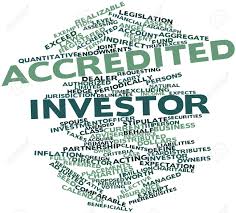When investing in a private placement, also know as a PPM, Crowdfunding, Syndication, etc. you will be asked for your “accredited investor” status. Here, we’ll discuss what makes someone an accredited vs. a non-accredited investor and what this means for your investment capabilities.
Typically, this means a person or a business entity who can deal in securities that may not be registered with financial authorities. These include natural high net worth individuals (HNWI), banks, insurance companies, brokers and trusts.
The requirements for accredited investors include a net worth of at least $1,000,000, excluding the value of your primary residence, or have income at least $200,000 each year for the last two years (or $300,000 combined income if married) and have the expectation to make the same amount. Presently the SEC may expand this definition as detailed in this article from June 19, 2019 HERE.
The good news is the process for setting up a Self-Directed IRA is no different for accredited and non-accredited investors. So you won’t need to change your course of action simply because you are a non-accredited investor.
You may find some of these private placement investments will take both accredited and non-accredited investors and with some you must be accredited. Before investing into such an offering be sure to do your due diligence on the asset sponsors and on the offering itself. You can find some helpful information about accredited and non-accredited investors on the website of FINRA (The Financial Industry Regulatory Authority) HERE as well as on the website of NASAA (The North American Securities Administrators’ Association) HERE.






